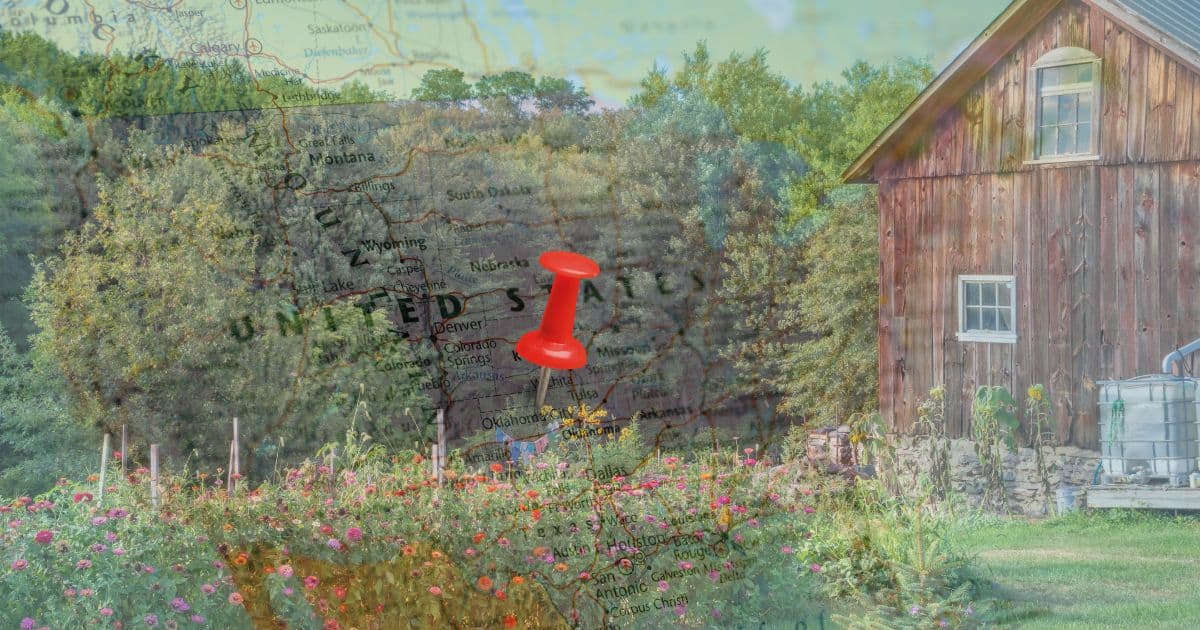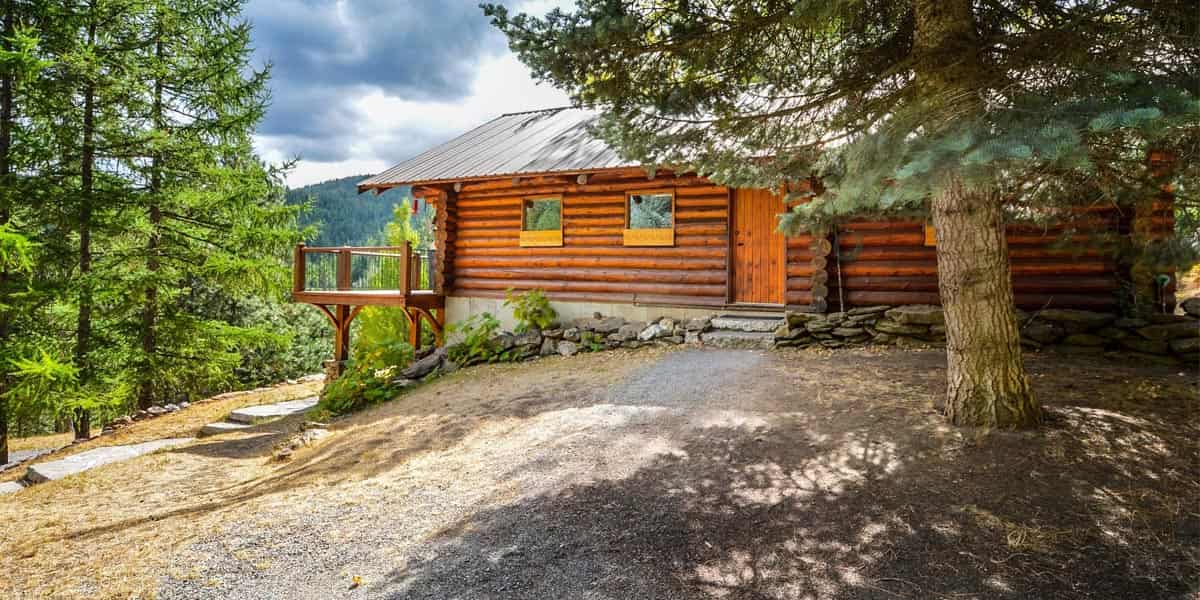Off grid living best states represent a compelling alternative lifestyle, drawing increasing interest from those seeking self-sufficiency and a closer connection with nature. This exploration delves into the crucial factors influencing the choice of location for off-grid living, examining legal frameworks, environmental considerations, accessibility to services, community dynamics, and financial implications. From navigating land ownership regulations to assessing the availability of natural resources and understanding the social landscape of off-grid communities, this guide provides a detailed overview of what to expect.
We will analyze key aspects across several states renowned for their suitability, offering a comparative perspective to help potential off-grid dwellers make informed decisions. The challenges and rewards of this lifestyle are examined, painting a realistic picture for those considering this significant life change. Our investigation will consider everything from the permitting process for essential utilities to the cost of living and the potential for economic independence.
Infrastructure and Accessibility
Choosing a location for off-grid living requires careful consideration of access to essential services and infrastructure. While the allure of self-sufficiency is strong, the reality of emergencies and daily needs necessitates a pragmatic approach to proximity to civilization. This analysis compares several states popular among off-grid enthusiasts, focusing on the critical factors of infrastructure and accessibility.
Proximity to Essential Services in Four States
The distances to essential services can significantly impact the feasibility and safety of off-grid living. Longer distances necessitate greater self-reliance and preparedness for emergencies. The following table provides estimated distances, acknowledging that these can vary widely depending on the specific location within each state. These figures represent averages based on data from various sources and should be considered approximations.
| State | Distance to Nearest Hospital (miles) | Distance to Nearest Grocery Store (miles) | Distance to Nearest Town (miles) |
|---|---|---|---|
| Montana | 30-70 | 15-50 | 10-30 |
| New Mexico | 25-60 | 10-40 | 5-20 |
| Idaho | 40-80 | 20-60 | 15-40 |
| Wyoming | 50-100 | 25-75 | 20-50 |
Road and Transportation Network Quality, Off grid living best states
Reliable transportation networks are crucial, even for off-grid dwellers, for accessing supplies, receiving medical care, and maintaining contact with the outside world. The quality and accessibility of roads vary considerably across states.In Montana, many areas feature well-maintained highways, but accessing remote off-grid locations often requires traversing unpaved and potentially challenging roads, especially during winter months. New Mexico exhibits a similar pattern, with a mix of paved and unpaved roads, where the condition of the latter can be significantly impacted by weather.
Idaho, while having a network of state highways, also presents challenges in accessing remote areas due to mountainous terrain and a less dense road network in certain regions. Travel times can be significantly longer than those indicated by map distances due to road conditions.
Internet Access Cost and Feasibility
Establishing reliable internet access in off-grid locations presents a significant logistical and financial challenge. The cost and feasibility vary greatly depending on the state’s infrastructure and the chosen technology.Let’s consider a hypothetical scenario comparing Montana and New Mexico. In Montana, with its lower population density and more challenging terrain, establishing satellite internet might be the most viable option, incurring a monthly cost of approximately $100-$200, with potential installation costs exceeding $1000.
In contrast, in parts of New Mexico with closer proximity to existing infrastructure, a combination of cellular data augmentation with a fixed wireless internet solution might be more cost-effective, potentially reducing monthly costs to $75-$150, while installation costs could be lower, ranging from $500-$1000. However, this assumes the availability of suitable infrastructure in the specific location. Both scenarios assume the necessity of purchasing or leasing necessary equipment.
The actual costs will vary depending on the chosen provider and specific location.
Cost of Living and Economic Considerations: Off Grid Living Best States

Embarking on an off-grid lifestyle requires careful consideration of the financial implications. While the allure of self-sufficiency is strong, the initial investment and ongoing costs can vary significantly depending on location and lifestyle choices. Understanding these economic factors is crucial for successful and sustainable off-grid living.
Comparative Costs Across States
The cost of land, building materials, and utilities fluctuates dramatically across the United States. The following table provides a generalized comparison for three states frequently associated with off-grid living. It’s important to note that these figures are averages and can vary widely based on specific location, property size, and market conditions. Detailed local research is crucial before making any financial commitments.
| State | Average Land Cost (per acre) | Average Building Material Cost (per sq ft) | Average Utility Cost (monthly estimate, assuming minimal reliance on grid) |
|---|---|---|---|
| Montana | $5,000 – $20,000 | $150 – $300 | $50 – $150 (primarily propane and well maintenance) |
| New Mexico | $2,000 – $15,000 | $120 – $250 | $75 – $200 (solar panel maintenance and water hauling may be significant) |
| Vermont | $10,000 – $40,000 | $180 – $350 | $100 – $250 (wood heating costs can be variable) |
Economic Benefits and Drawbacks of Off-Grid Living
The economic landscape of off-grid living presents both significant advantages and potential drawbacks. In states like Montana, the potential for self-sufficiency through gardening, livestock, and renewable energy can lead to reduced expenses on food and utilities. However, the high initial investment in land and infrastructure, coupled with potential unforeseen repair costs, represents a considerable financial risk. For example, a family in Montana who successfully grows their own food and utilizes solar power might save thousands annually on grocery and electricity bills.
Conversely, a major equipment failure, such as a well pump malfunction, could incur substantial repair costs, offsetting these savings.In New Mexico, the abundant sunshine makes solar power a viable and cost-effective option, reducing reliance on the grid. However, the arid climate may necessitate significant investments in water harvesting and storage systems, adding to the initial setup costs. For instance, a family in New Mexico might significantly reduce their electricity bills through solar, but the cost of establishing and maintaining a reliable water source could be a considerable ongoing expense.
Financial Planning for High Initial Setup Costs
For states with high initial setup costs, such as Vermont, meticulous financial planning is paramount. This includes creating a detailed budget encompassing land acquisition, building construction, infrastructure development (wells, septic systems, renewable energy installations), and contingency funds for unexpected repairs or replacements. Securing adequate financing through loans or savings is crucial. Furthermore, developing a realistic plan for income generation, whether through remote work, small-scale farming, or crafting, can help offset ongoing expenses and ensure long-term financial stability.
For example, a family in Vermont aiming for off-grid living should develop a comprehensive financial plan that considers the high cost of land and building materials, securing a substantial down payment or loan, and exploring potential income streams like selling handmade goods or offering services to nearby communities. Failing to adequately plan for these high upfront costs can lead to significant financial strain and potentially jeopardize the entire off-grid endeavor.
Ultimately, the pursuit of off-grid living is a deeply personal journey. The “best” state for off-grid living depends heavily on individual priorities, resources, and lifestyle preferences. While some states offer easier access to land and resources, others boast stronger community networks or more temperate climates. This comprehensive guide has aimed to illuminate the multifaceted considerations involved in choosing a location, empowering prospective off-grid dwellers to make a well-informed and fulfilling choice that aligns with their unique aspirations.
In this topic, you find that off grid living tips is very useful.



